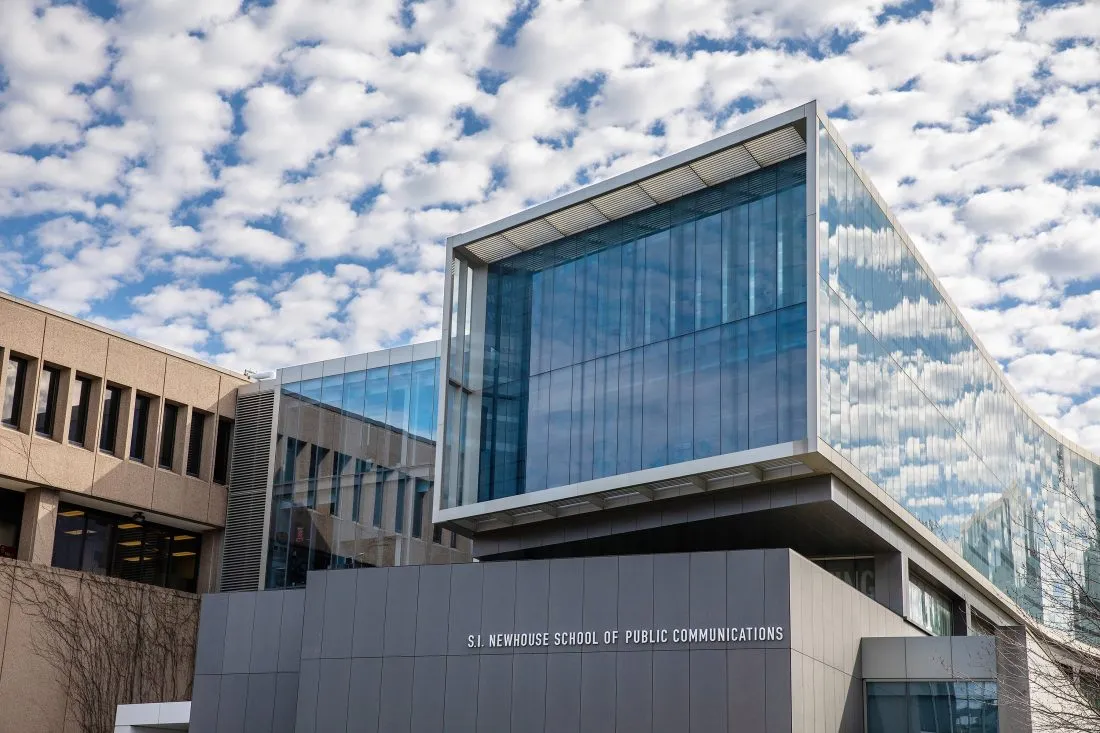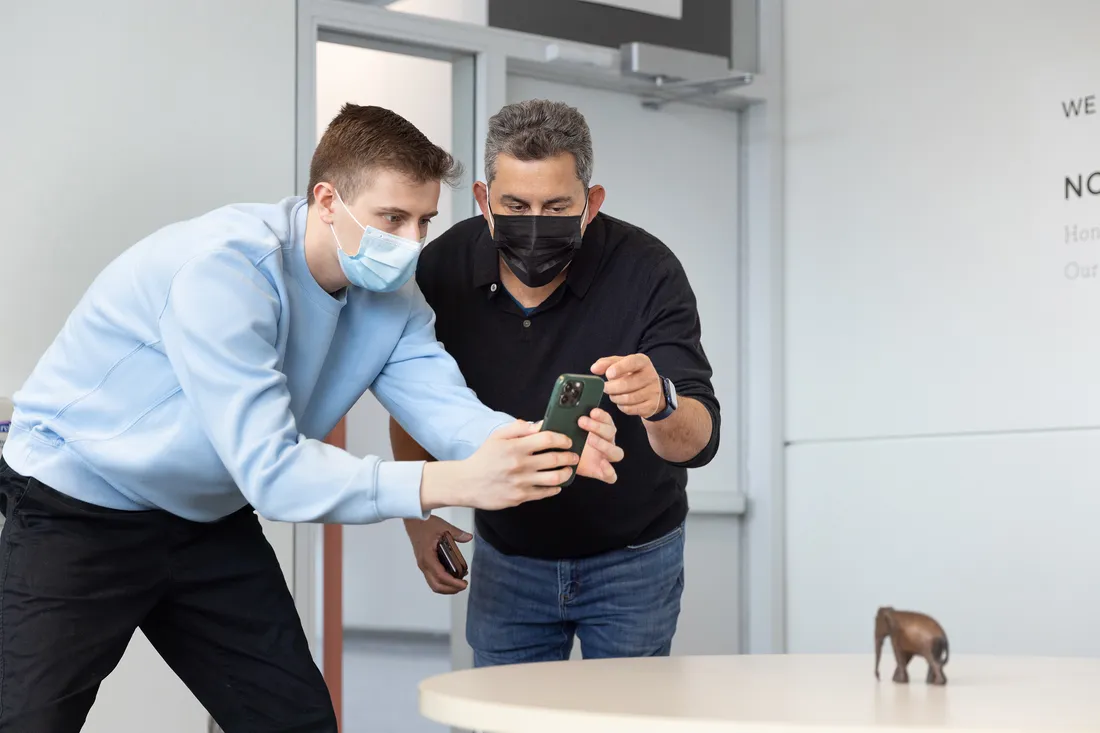
Ryan Baker ’22 (left), a dual major in broadcast and digital journalism and marketing management, gets tips from Professor Dan Pacheco on how to 3D scan objects using the iPhone 12’s LiDAR sensors.
In the Alan Gerry Center for Media Innovation at Syracuse University’s S.I. Newhouse School of Public Communications, Professor Dan Pacheco encourages students to explore and play around with ideas. There are Oculus headsets, gaming controllers and 3D cameras. A stockpile of drones rests on a bookcase, representing the evolution of the aerial image-takers. It’s a place where new technologies meet journalism, sparking creativity and innovation. “I often tell my students, it’s like we’re the super collider of ideas in the innovation lab,” says Pacheco, who holds the Peter A. Horvitz Endowed Chair in Journalism Innovation and is a professor of practice in the magazine, news and digital journalism department. “We smash things together to see what happens. A lot of the time things don’t work. But when they do, they work really well. Innovation is a messy process, and we embrace that.”
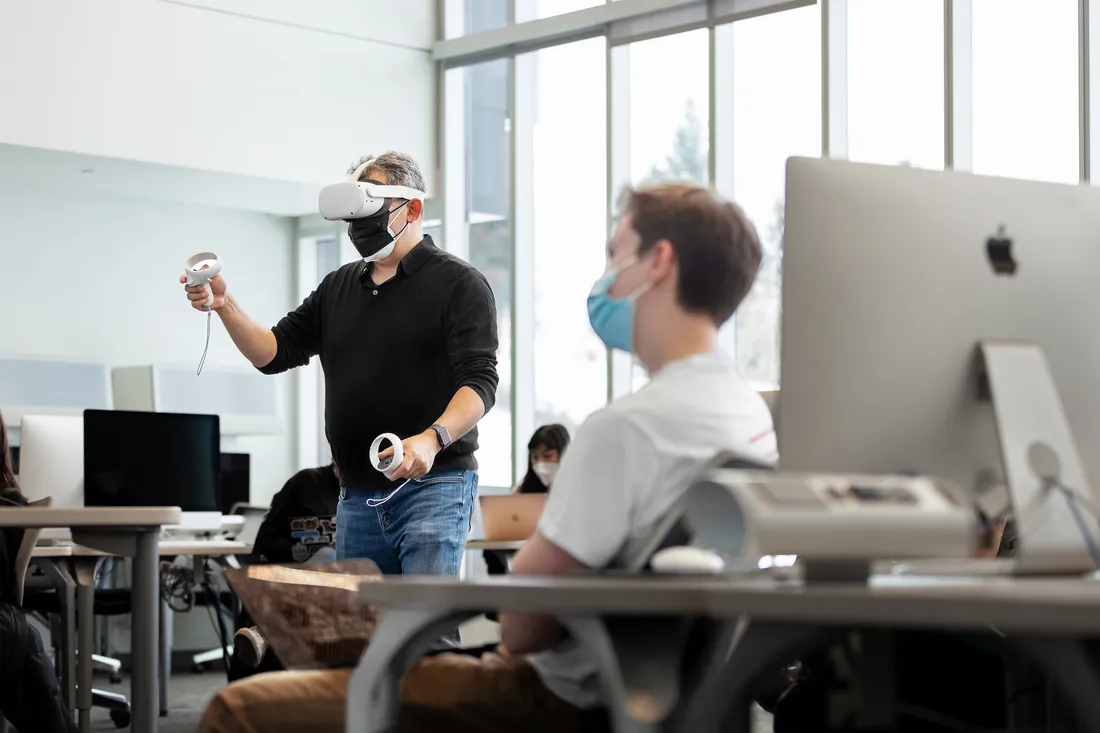
Professor Pacheco enters a virtual reality world in an Oculus Quest 2 headset and projects it onto a monitor for the entire class to see.
Pacheco is a pioneer in applying technologies to journalistic storytelling—from employing drones for aerial photography to creating virtual spaces that put people inside a story. He’s an entrepreneur and a recognized leader in the use of emerging media platforms and extended reality (XR), now often referred to as “the metaverse,” which comprises the mix of user experiences in the simulated digital world. One of the most recent additions to Pacheco’s repertoire is photogrammetry, which enables photographers to capture entire spaces with 3D cameras and recreate them for different media platforms. While it’s easy to get caught up in the razzle-dazzle of new technology, he emphasizes “it’s not about the technology, it’s about ideas and what problems they solve for people.”
At the Dawn of Digital Journalism
Pacheco, who joined the Newhouse faculty in 2012, has operated at the intersection of journalism and technology for over two decades, dating back to when the internet entered daily life. He began his career as a feature writer for The Denver Post and brought with him website-building skills he’d learned as a University of Colorado student. His familiarity with the World Wide Web didn’t go unnoticed. He got called on to create the prototype for the newspaper’s website. That success led to an offer from The Washington Post, where he was a founding online producer for its website and created one of the first online news communities.
We’re the super collider of ideas in the innovation lab. We smash things together to see what happens. A lot of the time things don’t work. But when they do, they work really well. Innovation is a messy process, and we embrace that.
Professor Dan Pacheco
From there, Pacheco signed on with AOL as a product manager for web-based community projects and then joined The Bakersfield Californian, where he launched Bakotopia.com, one of the first newspaper-run social networks. The Newspaper Association of America honored him in 2005 with a “20 Under 40” award for the work, and he also collected two Knight-Batten Awards for Innovations in Journalism. In 2014, as a consultant to Gannett Digital, Pacheco co-produced The Des Moines Register’s Harvest of Change series, a first-of-its-kind journalism project featuring 360-degree virtual reality (VR) video that collected an Edward R. Murrow Award. Amid his journalism work, he combined his zest for the digital realm and entrepreneurship to co-found BookBrewer, an eBook self-publishing service. “Being unafraid to try out new technologies and also evangelize them really was very beneficial to my career,” he says.
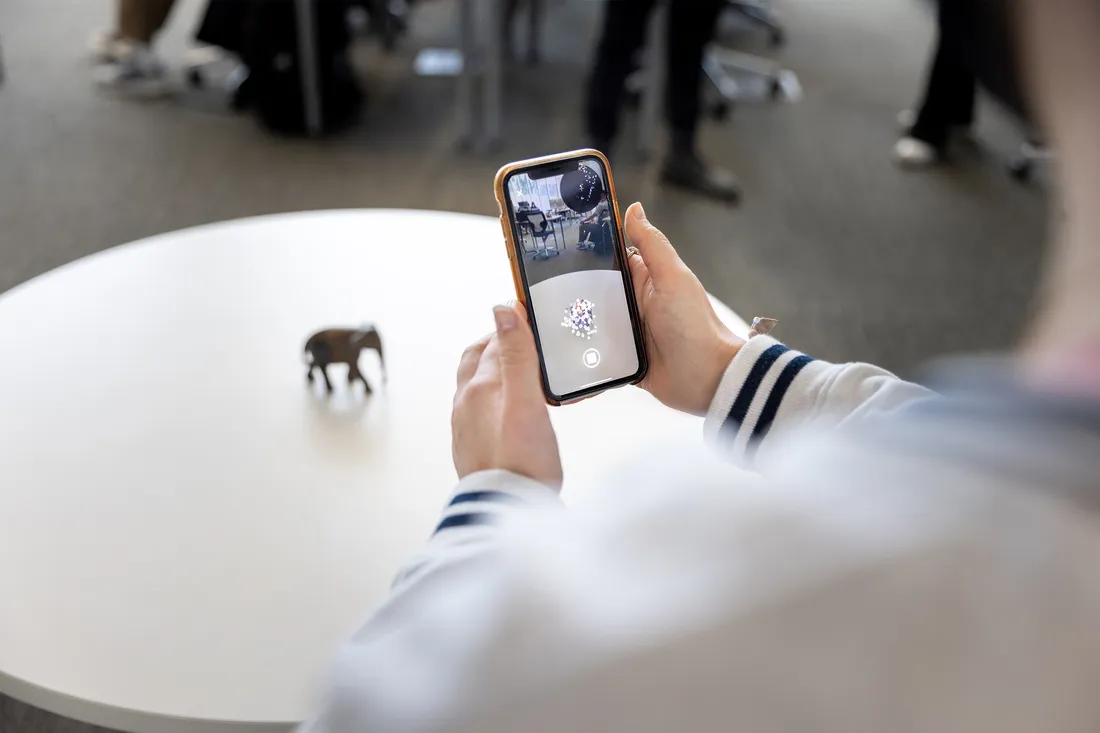
Pacheco introduces students to photogrammetry, which enables them to capture entire spaces in 3D. Here, a student scans an object using the Trnio Plus 3D capture app.
A Passion for Exploration
Pacheco preaches experimentation. In his Emerging Media Platforms and Virtual Reality Storytelling courses, he welcomes any interested students. His only prerequisite: a passion to explore and learn. “You really have to push your students and yourself to do things in new ways—and you kind of want them to not work because then you try different approaches and eventually make discoveries,” he says. “When it comes to innovation with totally new technologies, exploratory learning is the way you have to do it.”
By working with people from different disciplines or who have different approaches or different tools but a similar passion, you discover problems you didn’t know existed. You also find solutions that maybe they didn’t know existed.
Professor Dan Pacheco
In the virtual reality class, for instance, Pacheco encourages students to draw ideas from games and use gaming software systems to deliver information through unique approaches. Case in point: One of his students created a VR language-tutorial game to help people learn Korean by interacting with objects—sharing their names, pronunciations and characters. “It was a fun game, but what you see is that by doing something in a different way, it served the mission better,” he says. “With technology, innovation and entrepreneurship, the importance of play can’t be understated.”
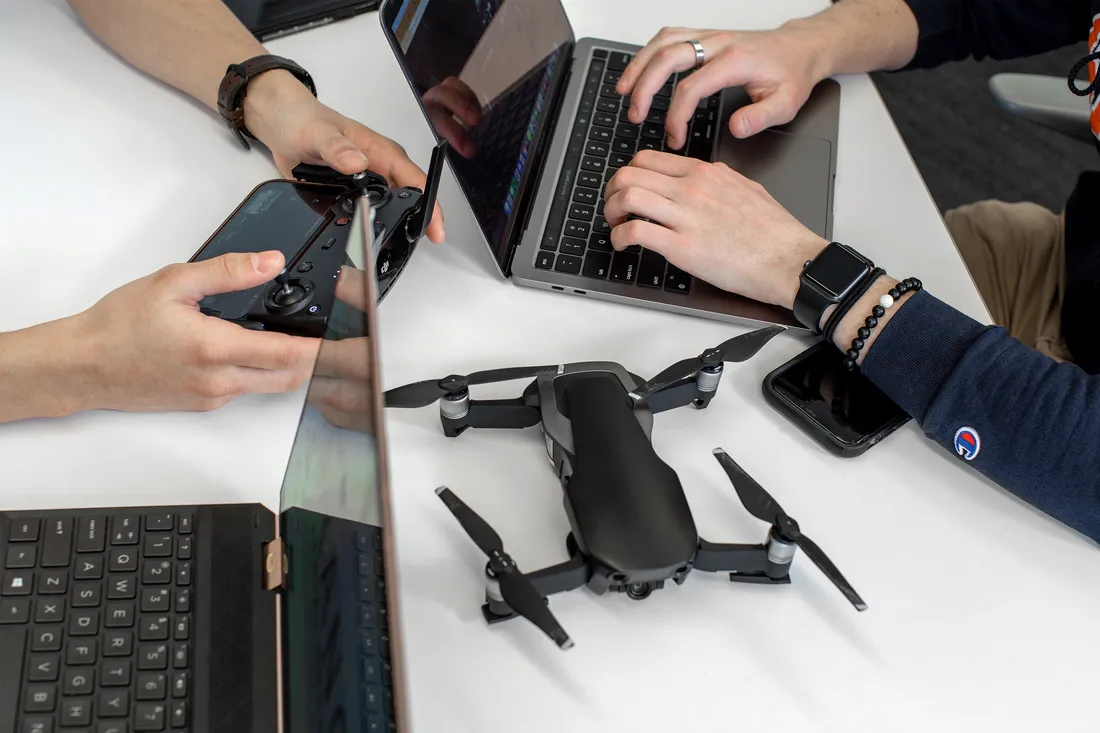
Members of the student organization Orange Aerial Productions work with a drone. Pacheco, the group’s faculty advisor, looks to get the students FAA certified to fly drones so they can take aerial footage for story projects.
Driving Creativity Through Collaboration
Pacheco also values collaboration as a key part of the creative process. He’s worked on interdisciplinary projects with faculty and staff from the School of Architecture, the College of Engineering and Computer Science, the School of Information Studies, the Syracuse University Museum and La Casita Cultural Center. “By working with people from different disciplines or who have different approaches or different tools but a similar passion, you discover problems you didn’t know existed,” he says. “You also find solutions that maybe they didn’t know existed.”
For La Casita, Pacheco and his students produced a virtual tour of an exhibition and filmed a 360-degree video of a Puerto Rican dance. He was part of a team of faculty advisors who helped students create immersive experiences for the national award-winning project Visualizing 81, produced in 2021 by The NewsHouse. He also serves as faculty advisor for Orange Aerial Productions, a new student organization whose participants look to gain FAA certification to fly drones. “My interest is to get pilots certified so they can work with other students on projects to incorporate aerial footage in their stories,” says the FAA certified drone pilot.
It’s not about the technology, it’s about ideas and what problems they solve for people.
Professor Dan Pacheco
In fact, Pacheco always has an elevated sense of what’s next—and how it will enliven learning, create research opportunities and lead students to become agents of change in an evolving media landscape. “I’m constantly having to learn new skills,” he says. “That’s exciting for me—and that’s what our students want. I’m constantly looking for new technologies and tools and approaches that I think—and the students who I work with think—could change the way that we all produce and consume media in the future.”

